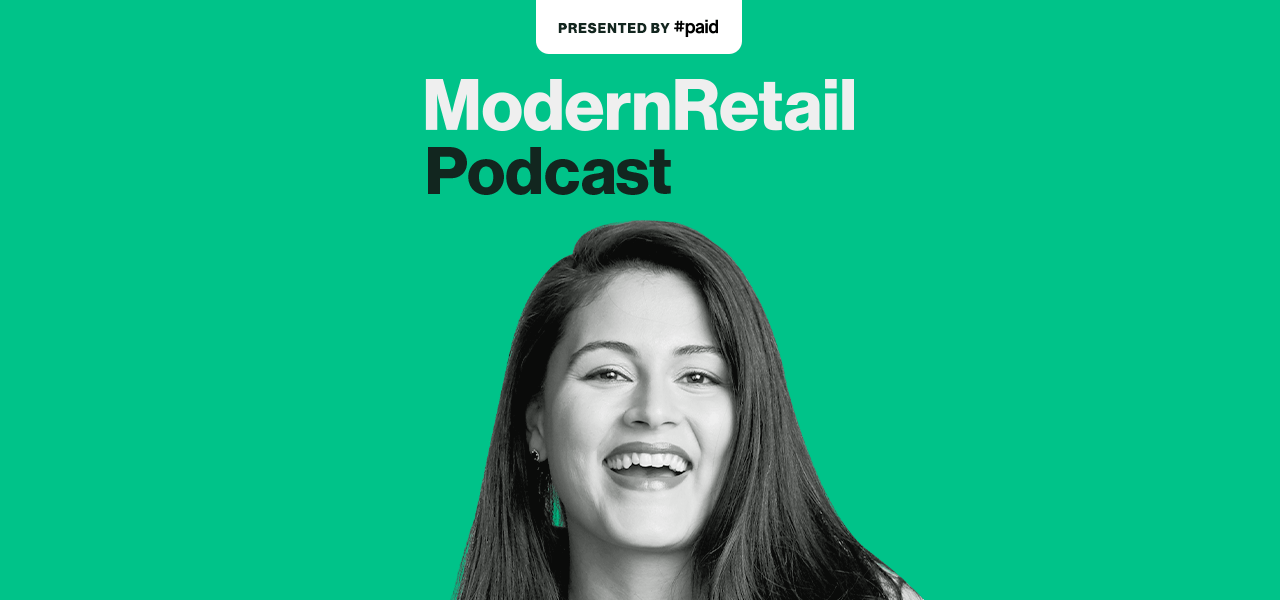‘Bringing the market to its full potential’: Dia&Co’s Nadia Boujarwah on growing the $21B plus-size market

Subscribe: Apple Podcasts | Stitcher | Google Play | Spotify | RSS
Online apparel marketplace Dia&Co is trying to tap into the $21 billion inclusive sizing market.
Within the last few years, more brands have begun introducing a wider range of sizes. But according to co-founder and CEO Nadia Boujarwah, most businesses are only scratching the surface. Boujarwah joined the Modern Retail Podcast this week and spoke about Dia&Co, as well as the current state of plus-size apparel.
Dia&Co has been around for six years, and has witnessed big shifts in brands’ plus-size strategies. “If you look at what the supply side of the [plus-size] equation is doing, it is remarkably anemic,” Boujarwah said. “About less than 20% of apparel dollars that are spent in the U.S. each year are spent in those sizes.”
Her company has been trying to change that. Inclusive apparel has had its ups and downs over the last few years. Between 2018 and 2019, more brands were entering into the space than ever before, Boujarwah explained. But the coronavirus changed a lot of product roadmaps. Throughout that time, Dia&Co was focused on bringing a platform that women could trust to provide clothing choices in many sizes.
Now, said Boujarwah, more brands are once again doubling down on plus-size options, which is giving Dia&Co a helpful boost. What’s more, there’s a large and growing group of plus-size influencers that Dia&Co has been tapping. Currently, the company partners with upwards of 500 influencers every month.
Though Dia&Co has dabbled in building its own brands, Boujarwah said the company is primarily focused on connecting customers with other apparel giants like Madewell and Wacoal — as well as helping those brands better market their plus-sized offerings.
Ad position: web_incontent_pos1
With that, Dia&Co has a huge opportunity at its fingertips, said Boujarwah. “We have always been a multi-branded retailer and a multi-category retailer. So our audience is broad,” she said. “Within that, we can serve different price-points.”
Here are a few highlights from the conversation, which have been lightly edited for clarity.
A $21 billion opportunity
“One summary of our experience in the last six years is really refining our understanding of exactly what’s happening on the supply side that prevents this market from really coming to life in the way that we believe it should… We believe that inclusive fashion is the largest opportunity in retail today — plus-size women spend about $21 billion a year, and if she could spend at parity what women in smaller sizes are spending on apparel, that’s like an incremental $80 billion to $100 billion a year in spend. That’s really just about bringing this woman to parity. And so when we think about what the ultimate success for us looks like, we dream very big and really think about bringing that market to its full potential. I genuinely don’t think that there are any other opportunities in retail that have that much latent demand.”
A broad range of products and price-points
“We have always been a multi-branded retailer and a multi-category retailer. So our audience is broad. Within that, we can serve different price-points — we can serve different aesthetics — because we’re not a classical direct-to-consumer brand that has a small set of SKUs that are very targeted towards one customer. What we have found over the course of the last six years is that the shared experience in shopping in larger sizes is actually very, very strong regardless of what aesthetic or price-point you may be looking for. Therefore, if we can fix the experience for her, we can deliver on different aesthetics and price-points successfully on our platform to a wider audience of women. And we do that today. So if you want to invest in a beautiful leather jacket, you can buy that at Dia. Or, if you’re looking for something at a lower price-point, that’s also available — because we work with brands that fill those gaps across the marketplace.”
Why Dia&Co taps micro-influencers
“Where we find the best kind of reflection of our brand, because we have always been a community-based brand, is really in building out a long-tail program with smaller influencers. These are women that have between 5,000 and 50,000 followers across platforms. The net result of that is that the authenticity that you get with these women and their followers is something that is nearly impossible to find with some of the larger accounts. The magic of the social platforms is how niche the communities are able to be in who they follow, and therefore what they love. And so we’re able to get really authentic reviews and content and product features from these women who have avid followers in their niche communities — in a way that’s working really well. We work probably with over 500 brand ambassadors a month.”
Ad position: web_incontent_pos2
‘TikTok is a very special platform’
“TikTok is interesting because you really don’t know out of the gate what’s going to hit on TikTok. And when you have that many pieces of content being created, inevitably there are hits every month — inevitably, something goes viral and gets a couple million views… TikTok is a very special platform because if you think about the content that you consume on TikTok — unlike any other content — it’s primarily from people you don’t know. Versus, Instagram and Facebook are so dominated by your feed that at the end of the day, you’re you’re not really discovering that much. And TikTok has been such a great discovery platform for us.”

